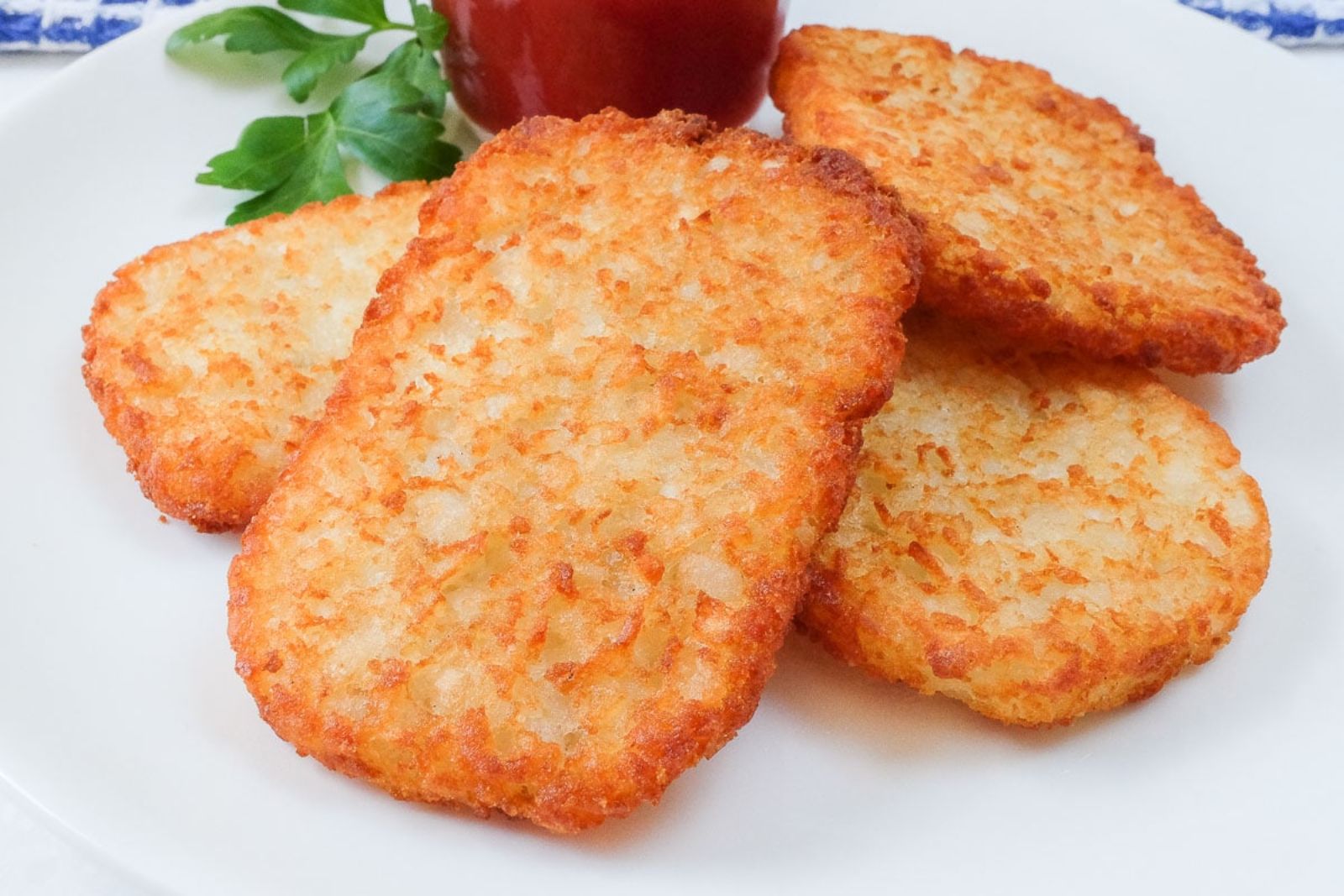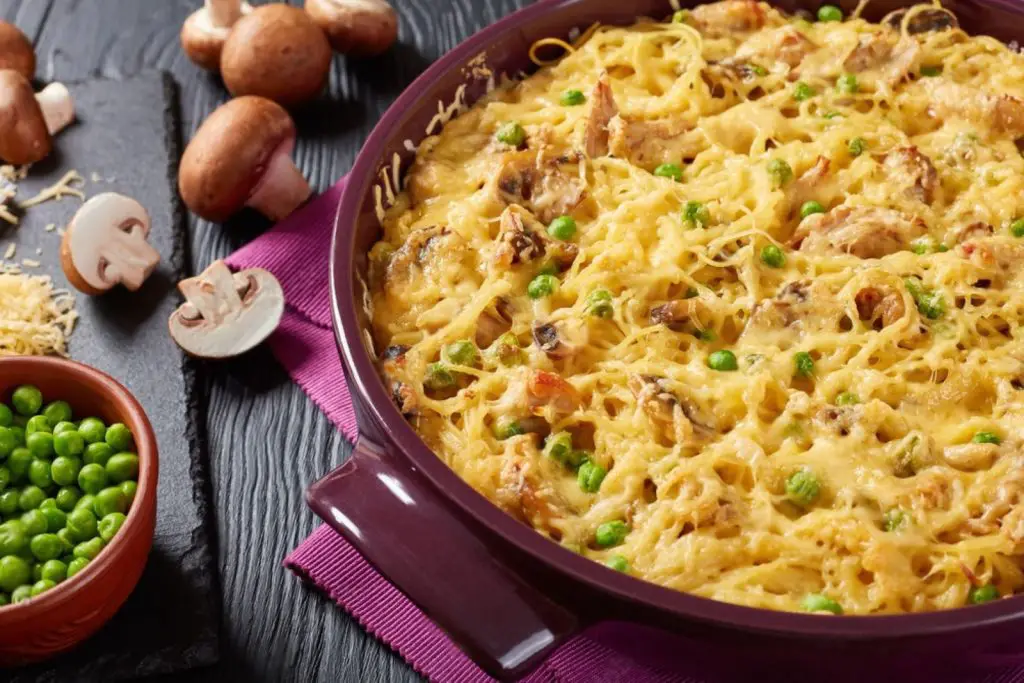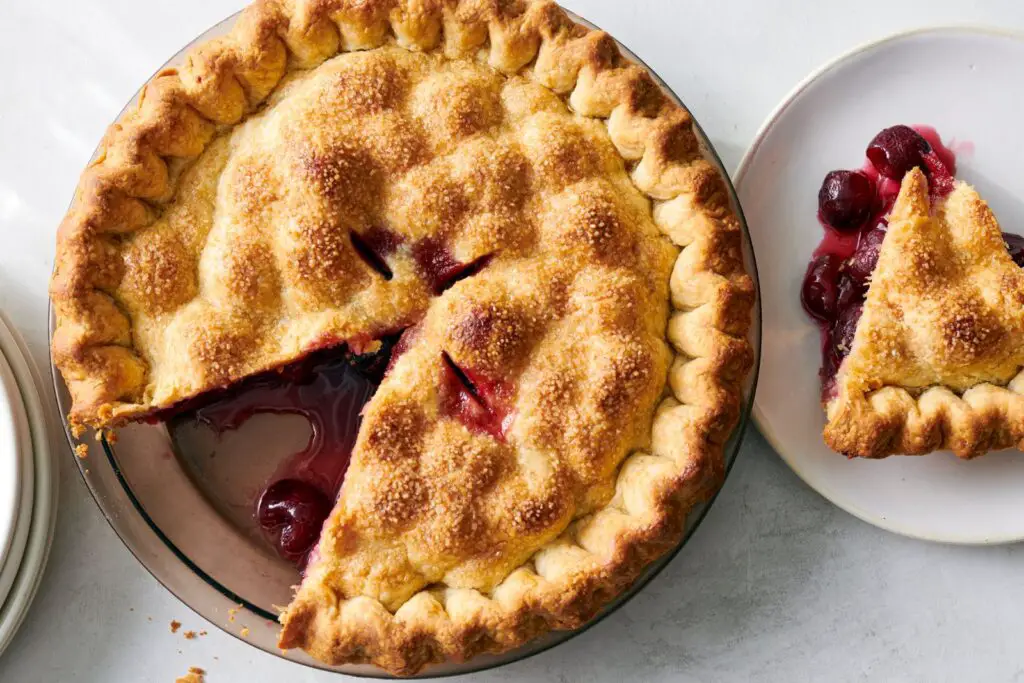
Step into the world of crispy, golden-brown goodness with hash browns, a beloved breakfast staple that has become a comfort food favorite around the globe. These irresistible shredded potatoes, often seasoned to perfection, offer a delightful combination of crispy exterior and tender interior, making them a perfect accompaniment to your morning meal. Whether enjoyed as a side dish or the star of the show, hash browns are a versatile treat that can be customized to suit any taste.
However, if you find yourself with extra hashbrowns or want to prepare them in advance for quick and easy breakfasts, freezing them is a convenient option that ensures you always have a batch of delicious hash browns ready at a moment’s notice. In this guide, we’ll delve into the art of freezing hash browns, sharing expert tips and techniques to preserve their texture and flavor, allowing you to enjoy these crispy delights whenever your appetite demands.
Here are the simple steps to freeze hash brown:
Step 1: Prepare the Hash Brown
Freezing hash browns begins with proper preparation of the potatoes. Follow these steps to ensure optimal results:
- Gather your ingredients and equipment: You will need potatoes, a box grater or a food processor, a clean kitchen towel or paper towels, and a bowl.
- Select the right potatoes: Choose starchy potatoes like Russet or Yukon Gold for the best hash browns. These varieties have a higher starch content, which helps create a crispy texture.
- Peel and grate the potatoes: Start by peeling the potatoes using a vegetable peeler. Once peeled, grate them using a box grater or a food processor with a grating attachment. The size of the grate can vary depending on your preference, but a medium to fine grate is often preferred for hash browns.
- Remove excess moisture: After grating the potatoes, they will contain some moisture. To prevent soggy hash browns, it’s crucial to remove as much moisture as possible. Place the grated potatoes in a clean kitchen towel or several layers of paper towels. Squeeze and press down firmly to extract any excess moisture. Repeat this process a few times until the potatoes feel relatively dry.
- Transfer the grated potatoes to a bowl: Once the excess moisture is removed, transfer the grated potatoes to a bowl. This will make it easier to portion and package them for freezing later on.
By starting with properly prepared potatoes and removing excess moisture, you set the foundation for successful frozen hash browns. This step ensures that your hash browns maintain their texture during the freezing and thawing process, resulting in crispy and delicious breakfast treats.
Step 2: Blanch for Optimal Freezing
Blanching the hash browns before freezing is a key step in preserving their quality and preventing discoloration. Follow these steps to blanch your grated potatoes effectively:
- Prepare a pot of boiling water: Fill a large pot with water and bring it to a rolling boil over high heat. Make sure the pot is large enough to accommodate the grated potatoes comfortably.
- Add the grated potatoes to the boiling water: Carefully add the grated potatoes to the boiling water. Use a slotted spoon or a strainer to gently lower them into the pot, ensuring they are fully submerged.
- Blanch the hash browns for approximately 2 minutes: Allow the grated potatoes to blanch in the boiling water for about 2 minutes. This blanching time is sufficient to deactivate enzymes that can cause discoloration and deterioration, while still maintaining the texture and flavor of the hash browns.
- Transfer the blanched hash browns to ice water: Once the blanching time is up, quickly remove the grated potatoes from the pot using a slotted spoon or a strainer. Immediately transfer them to a bowl filled with ice water. This will rapidly cool down the potatoes and halt the cooking process, preserving their texture and preventing them from becoming mushy.
- Drain and pat dry the blanched hash browns: After the hash browns have cooled in the ice water for a few minutes, drain them well. Use a colander or a strainer to remove any excess water. Next, gently pat them dry using a clean kitchen towel or paper towels. Ensuring that they are thoroughly dried will prevent ice crystals from forming during freezing and maintain the desired texture when thawed.
Blanching the hash browns helps retain their color and flavor while preventing enzymatic reactions that could negatively impact their quality. By blanching and promptly cooling the grated potatoes, you set the stage for successful freezing and maintain the integrity of your hash browns for future use.
Step 3: Thoroughly Dry the Hash Browns
After blanching and cooling the hash browns, it is crucial to remove any excess moisture before freezing them. Properly drying the hash browns helps prevent the formation of ice crystals and ensures that they maintain their desired texture when thawed. Follow these steps to thoroughly dry your blanched hash browns:
- Prepare clean kitchen towels or paper towels: Have a stack of clean kitchen towels or several layers of paper towels ready for drying the hash browns.
- Transfer the blanched hash browns: Carefully remove the blanched hash browns from the ice water using a slotted spoon or a strainer, allowing any excess water to drain off.
- Place the hash browns on the towels: Spread out the blanched hash browns in a single layer on the clean kitchen towels or paper towels. Make sure they are not overlapping to ensure efficient drying.
- Gently pat dry: Use another kitchen towel or paper towels to gently pat the hash browns, absorbing any remaining moisture. Be careful not to press too hard, as this may cause the hash browns to lose their shape.
- Allow air drying: Leave the hash browns on the towels for a few minutes to air dry further. This will help evaporate any lingering moisture and ensure that they are adequately dry before freezing.
By thoroughly drying the blanched hash browns, you prevent excess moisture from turning into ice crystals during freezing. This step is crucial to maintaining the desired texture and crispiness of the hash browns when they are thawed and cooked. Properly dried hash browns will freeze better and retain their quality until you are ready to enjoy them.
Step 4: Portion and Pack the Hash Brown
After thoroughly drying the hash browns, it’s time to portion and package them for freezing. Follow these steps to ensure proper portioning and packaging:
Determine portion sizes: Consider your needs and preferences when dividing the hash browns into portions. You can portion them individually or in family-sized servings, depending on how you plan to use them later.
- Prepare freezer-safe containers or bags: Choose freezer-safe containers or resealable freezer bags that are suitable for long-term storage. Ensure they are clean and in good condition.
- Portion the hash browns: Place the desired amount of hash browns into each container or bag. Leave some headspace if using containers to allow for expansion during freezing. If using bags, squeeze out as much excess air as possible before sealing.
- Remove excess air: For bags, press out the excess air by carefully flattening the bag before sealing it. This helps minimize the risk of freezer burn and preserves the quality of the hash browns.
- Label and date: Take a moment to label each container or bag with the date of freezing and a brief description of the contents. This will make it easier to identify and use the hash browns later on.
- Optional step: For added protection, you can wrap the containers or bags with a layer of aluminum foil or place them in a larger freezer-safe container to prevent any potential freezer odors from seeping in.
By portioning and properly packaging the hash browns, you ensure convenient access to the desired quantity without having to thaw the entire batch. Airtight packaging minimizes exposure to air and prevents freezer burn, preserving the texture and flavor of the hash browns. Clear labeling helps you easily identify and keep track of the frozen hash browns, ensuring they are used within their recommended storage time.
Step 5: Freeze and Store in the Freezer
After portioning and packaging the hash browns, it’s time to freeze them for long-term storage. Follow these steps for proper freezing and storage:
- Choose an appropriate freezer location: Select a spot in your freezer where the hash browns won’t be disturbed or crushed by other items. This ensures that they maintain their shape and texture during freezing.
- Lay them flat: If possible, lay the containers or bags flat in the freezer. This allows for even freezing and maximizes the use of freezer space. If stacking is necessary, leave some space between the packages to allow for proper airflow.
- Freeze promptly: Place the hash browns in the freezer as soon as possible after packaging. This ensures that they freeze quickly and retain their quality.
- Recommended storage time: For the best quality, it’s ideal to use the frozen hash browns within three months. Beyond this timeframe, they may start to lose their flavor and texture. Labeling the containers or bags with the date of freezing helps you keep track of their storage duration.
- Avoid temperature fluctuations: Maintain a consistent freezing temperature in your freezer. Fluctuations in temperature can affect the quality of the frozen hash browns. Avoid frequently opening the freezer door, as it can cause temperature variations.
- Proper storage conditions: Ensure that the freezer containers or bags are airtight to prevent freezer burn and moisture loss. Freezer burn occurs when air comes into contact with the food, causing dry patches and deteriorated quality. Properly sealed containers or bags minimize this risk.
By taking these freezing and storage guidelines, you can maintain the quality of the hash browns for an extended period. Freezing them promptly, in suitable containers or bags, and storing them in a consistent freezer environment will help preserve their flavor, texture, and overall deliciousness.
Step 6: Thaw the Frozen Hash Browns
When you’re ready to savor your frozen hash browns, it’s important to thaw them properly before cooking. Follow these steps to ensure the best results:
- Retrieve the desired amount: Remove the portion of frozen hash browns you wish to use from the freezer. Keep the remaining hash browns stored in the freezer for future use.
- Thaw in the refrigerator: Place the frozen hash browns in a covered container or on a plate and transfer them to the refrigerator. Allow them to thaw slowly and evenly overnight. Thawing in the refrigerator helps maintain the texture of the hash browns and minimizes the risk of bacterial growth.
- Cooking options: Once the hash browns are completely thawed, you have various cooking options available. You can fry them in a skillet with a little oil for a crispy finish, or bake them in the oven for a healthier alternative. The cooking method depends on your personal preference and the desired texture of the hash browns.
- Frying in a skillet: Heat a skillet over medium-high heat and add a small amount of oil or cooking spray. Once the skillet is hot, add the thawed hash browns and spread them out in an even layer. Cook for a few minutes on each side, flipping occasionally, until they are golden brown and crispy.
- Baking in the oven: Preheat the oven to the recommended temperature, typically around 400°F (200°C). Place the thawed hash browns on a baking sheet lined with parchment paper or a non-stick baking mat. Bake for approximately 15-20 minutes, or until they are golden brown and crispy. Flip them halfway through the baking process for even browning.
By allowing the hash browns to thaw slowly in the refrigerator, you maintain their texture and prevent them from becoming mushy. Once thawed, you can cook the hash browns using your preferred method, whether it’s frying or baking, to achieve the desired crispiness. Season them to your liking and enjoy the deliciousness of your homemade hash browns.
Other related questions
Can you refreeze hash brown?
It is generally safe to refreeze hash browns if they have been thawed properly and not left at room temperature for an extended period. However, the quality and texture of the hash browns may be affected after the second freezing and thawing cycle. It is recommended to use freshly cooked hash browns or consume the thawed ones within a short period to maintain their best taste and texture.
How do I know if the hash brown has gone bad after being frozen?
To determine if frozen hash browns have gone bad, examine their appearance, texture, and smell. If they exhibit signs of freezer burn, such as dry, discolored, or shriveled patches, their quality may be compromised. Mold, unusual odors, or a slimy texture are indicators of spoilage and should prompt you to discard them. It’s important to trust your senses and prioritize food safety when evaluating the condition of frozen hash browns.
Can I freeze shredded potatoes for hash browns?
Yes, you can freeze shredded potatoes for hash browns. Start by properly preparing the shredded potatoes, removing excess moisture by squeezing or blotting them dry. Next, blanch the shredded potatoes briefly to preserve their quality during freezing. Finally, portion and package the blanched and dried shredded potatoes in freezer-safe containers or bags, ensuring they are airtight. Properly frozen and stored, shredded potatoes can maintain their texture and flavor for several months in the freezer.
Are there any seasoning or flavoring options I should consider before freezing hash browns?
Before freezing hash browns, it is recommended to keep the seasoning and flavoring options minimal. Salt and pepper are commonly used seasonings that can be added before freezing. However, it is best to avoid adding ingredients like onions, garlic, or herbs, as their flavors can intensify during freezing and affect the overall taste of the hash browns. Seasoning can be adjusted and enhanced when cooking the thawed hash browns to achieve the desired flavor profile.
Should I freeze cooked hash browns?
It is generally not recommended to freeze already cooked hash browns. Freezing cooked hash browns can result in a loss of texture and quality. When thawed and reheated, the hash browns may become mushy or have an undesirable texture. It is best to freeze uncooked hash browns and cook them fresh for optimal taste and texture.








